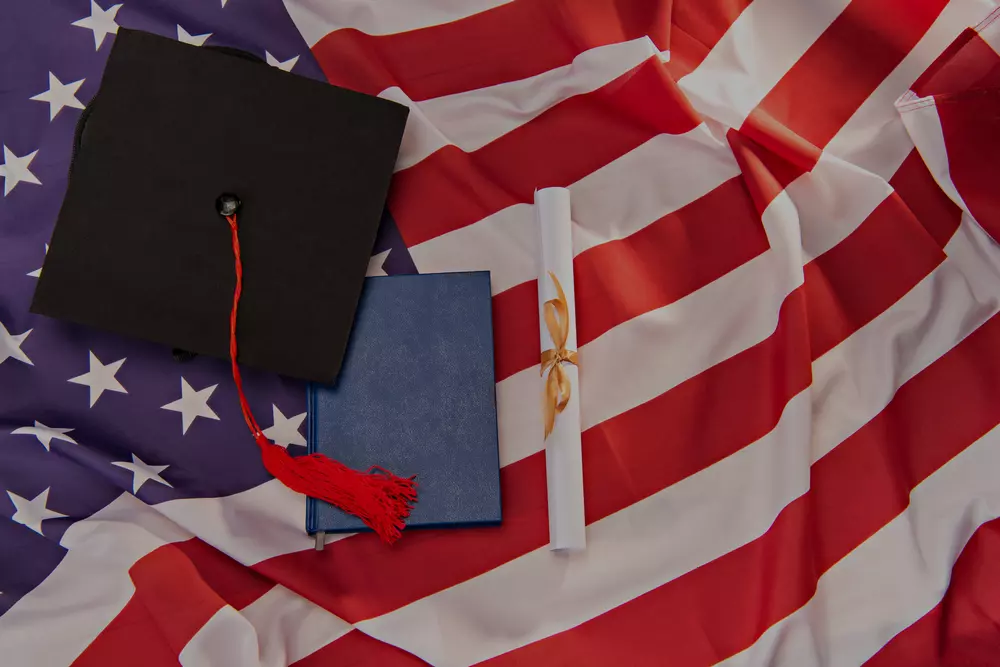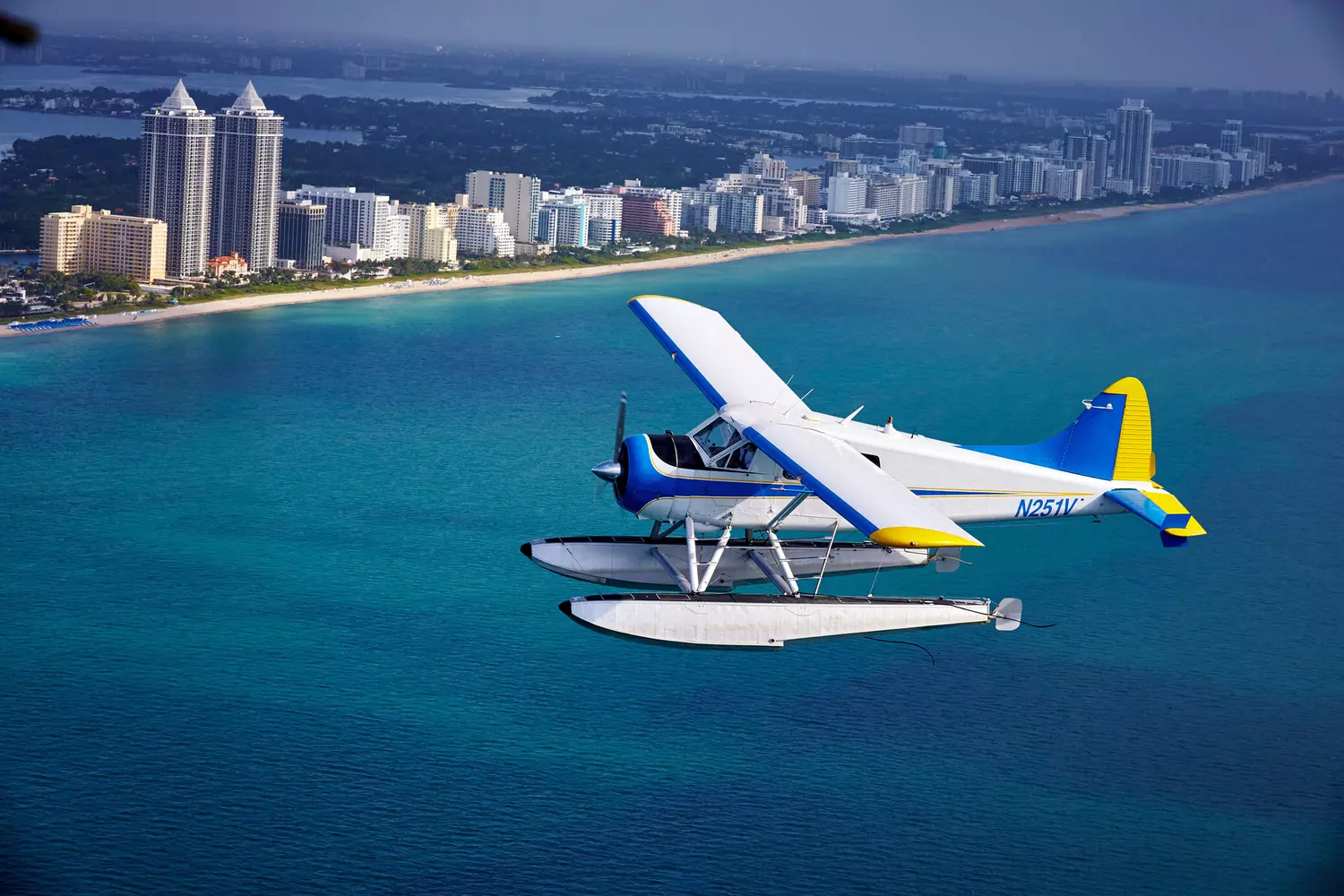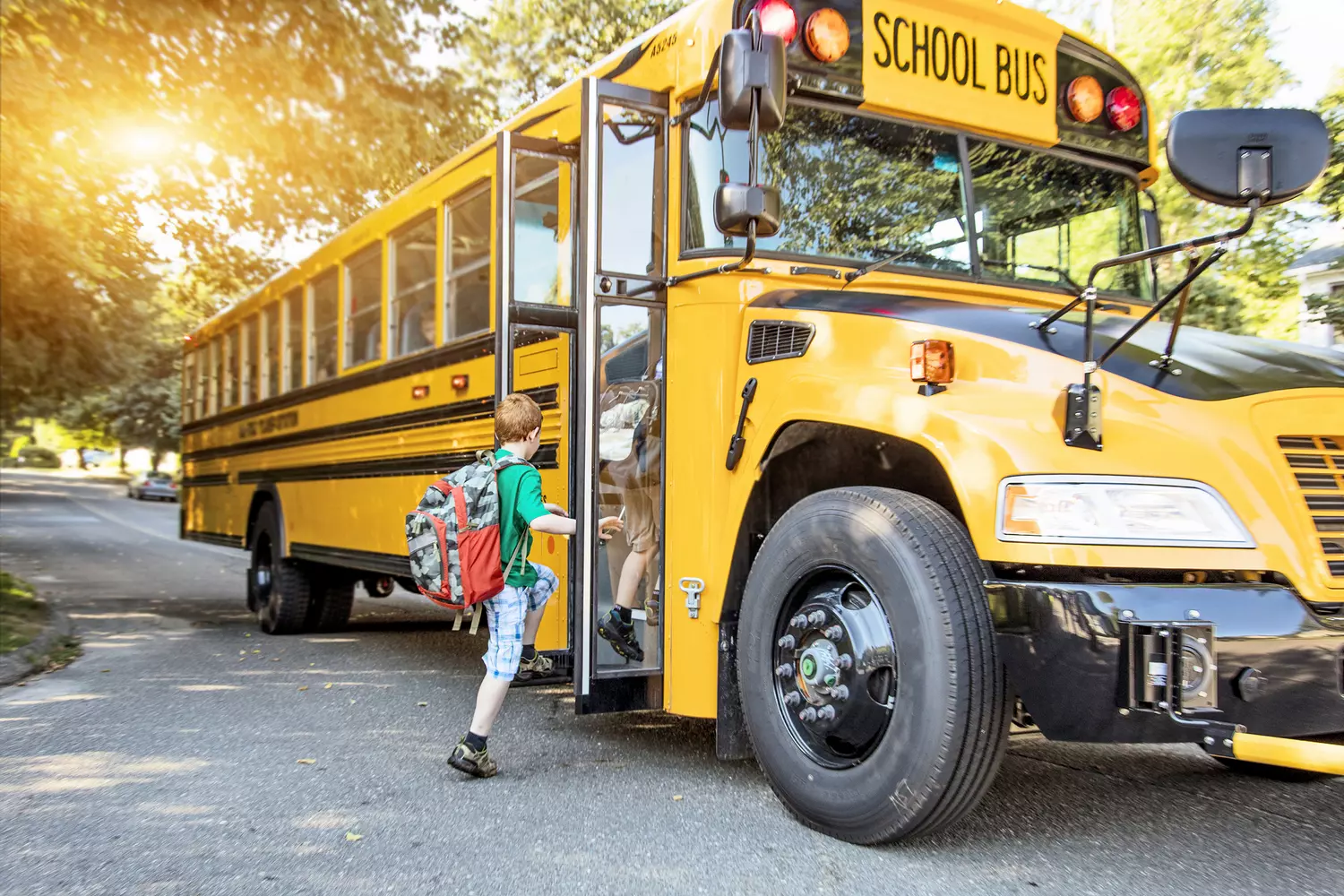America is a country where roads are more than just asphalt connecting cities. They are a living network of stories, lives, and adventures. Here, a highway can stretch for hundreds of miles, changing landscapes, climates, and even culture along the way.
In the USA, having a car is not a luxury, but a necessity, a freedom, and a symbol of independence.
You can admire the American road system for a long time — the perfect highways, well-thought-out infrastructure, and convenience for travel. But sooner or later, everyone who stays here for a while faces one simple but important question: “How do I get a driver’s license in the USA?”
For an American, a driver’s license is more than just a document. It is your personal key to countless opportunities. Without it, it’s difficult to rent housing, open a bank account, buy a car, or even just verify your identity in a store.
In some states, a driver’s license serves as a passport — it’s that universal.
If you’ve moved on a visa, come to work, study, or just decided to live in the States for a few months, sooner or later you’ll need local driving privileges. An international driver’s license isn’t always valid everywhere, and renting a car without a U.S. license often costs more and comes with additional insurance conditions.
Besides, getting behind the wheel and hitting the road, independent of bus or train schedules, is a completely different feeling. A feeling that America is open to you.
Imagine this: you’re driving along the famous Route 66, desert and horizon outside your window, and ahead — miles of new experiences. Around the next bend — a cozy 1960s-style café, smelling of coffee and cherry pie. A little further — endless fields, ranches, and neon signs. This is the essence of American roads: each one is a promise of adventure.
And to become part of this culture, it takes very little — just get your license. Yes, the U.S. has its own rules, DMV, tests, and forms, but with the right approach, it all goes smoothly and can even be fun. You’re not just learning to drive — you’re getting to know a new country through its roads.
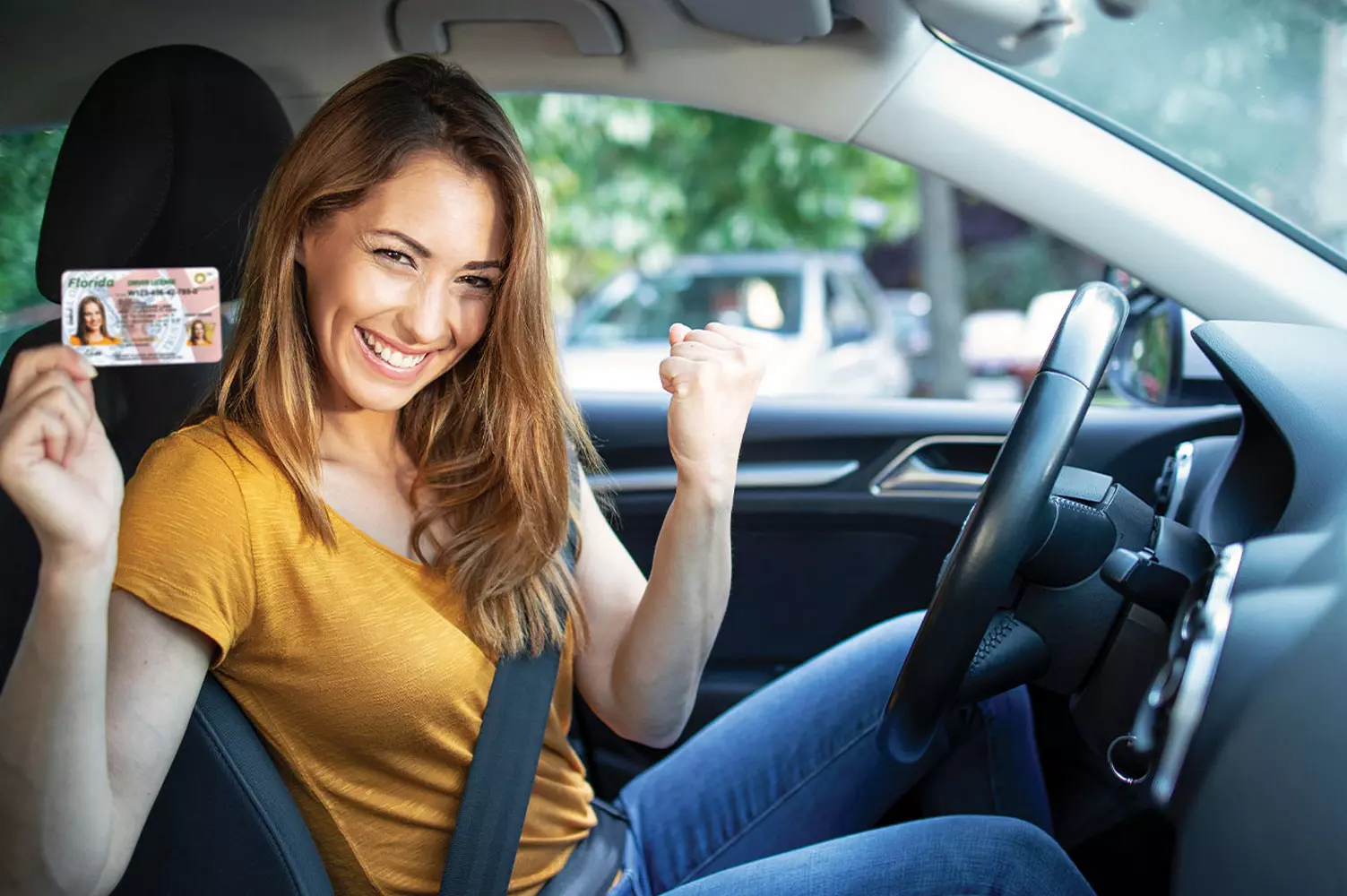
The youngest licensed driver in America lived in North Dakota — she was 14 years and 9 months old. The oldest registered driver, in California, successfully renewed their license at the age of 104.
Why a U.S. Driver’s License Is Much More Than Just a Pass to Drive
A driver’s license in America is not just a document that proves you can park or avoid hitting the car behind you. For most people in the U.S., it is one of the most important everyday identifiers — essentially a “life card” that provides access to a whole range of daily activities and services. Below is a detailed and lively explanation of why this is the case, with examples, practical tips, and a couple of surprising details.
- 01. License as a “ticket” to everyday life
Unlike many countries where a passport is primarily used for travel and official procedures, American driver’s licenses serve as a substitute for a passport in everyday situations. Why is that?
- Convenience
A plastic card in your wallet is easier and safer to carry than a passport. Many institutions require an ID upon entry — and a driver’s license fits perfectly. - Nationwide recognition
Although licenses are issued by individual states, they are accepted virtually everywhere in the U.S. as a form of identification. - Versatility
One card allows you to verify your identity at a bank, rent housing, purchase age-restricted products, or register for certain services.
- 02. Specific cases where a license replaces a passport
To understand its real usefulness, here’s a list of typical situations where a driver’s license is your primary document:
- Opening a bank account
Almost all banks require an ID; a driver’s license is usually sufficient. - Renting housing
Property owners and agencies (real estate) require identification when signing a lease. - Car rental
It’s possible to rent without a U.S. license, but the terms and insurance costs are usually less favorable; many companies prefer a local license. - Purchasing airline tickets / boarding domestic flights
Since 2005, driver’s licenses are often accepted as identification for domestic flights (especially if they meet the REAL ID standard). - Age-restricted purchases
Beer, alcohol, tobacco — a license quickly resolves any verification issues. - Medical services
At a hospital or clinic, you’ll need to prove your identity; a driver’s license does this instantly. - Official procedures and transactions
Signing contracts, receiving packages, interacting with government agencies — a license simplifies the process.
- 03. REAL ID: when a license becomes a “golden key”
It’s worth mentioning REAL ID — a federal standard that increases the reliability of identification. If your license meets REAL ID requirements, it is accepted for access to certain federal facilities and for boarding domestic flights without additional documents.
Practically, this means: if you plan to travel frequently within the country or want to minimize potential issues during checks, it makes sense to obtain a REAL ID-compliant license (check the requirements on your state’s DMV website).
In the U.S., a driver’s license is not just a plastic card with a photo. It is a key to mobility, access to important services, and your independence in a new country. By obtaining one, you not only gain the ability to drive — you acquire a convenient tool for life: from renting housing to visiting a doctor and traveling across the country. Therefore, even if you don’t plan to drive much yet, having an American driver’s license is a smart and practical step.
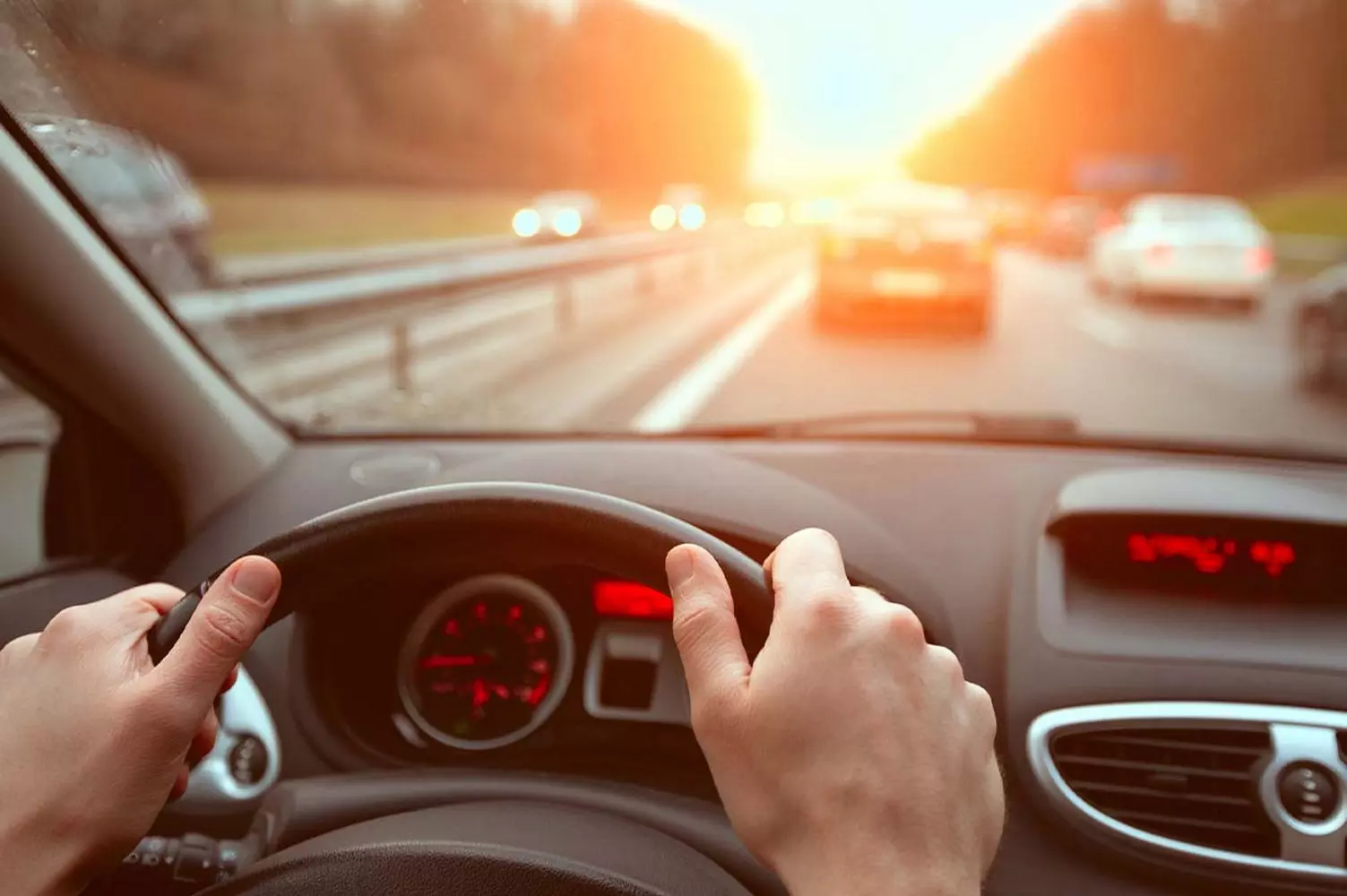
How the U.S. Driver’s License System Works — A Detailed Guide for Beginners
The U.S. driver’s license system is a bit like a puzzle: each state has its own pieces, but together they form a clear picture. Below is a detailed, lively, and easy-to-understand explanation of how it all works, the different types of licenses, general rules, and state-specific regulations. If you’re about to get an American license, this section is your guide to the key concepts.
- 01. Federation and states: one country — many rules
The U.S. is a federation. This means that driving laws and licensing are largely managed by individual states. As a result:
- Each state has its own DMV (Department of Motor Vehicles) or equivalent agency with unique forms, rules, and fees.
- Terminology and procedures are similar, but details differ: minimum age, required documents, exam formats, availability of tests in Russian/other languages, and even license validity periods.
- Despite differences, a license issued in one state is recognized in other states — you can drive across the country with “your” license. The exception is commercial driving (CDL), which has additional requirements.
- 02. Who issues licenses and what it means
The agency that issues licenses is usually called DMV, Bureau of Motor Vehicles (BMV), or Department of Highway Safety and Motor Vehicles (DHSMV) depending on the state. Its functions include:
- Issuing and renewing driver’s licenses;
- Conducting written and practical exams;
- Vehicle registration;
- Maintaining a database of violations and points;
- Implementing programs such as REAL ID, organ donor, etc.
- 03. License validity and renewal
- Validity of standard driver’s licenses usually ranges from 4 to 8 years, depending on the state and license type.
- Many states allow online renewal if there are no serious violations, tests, or status changes. Otherwise, an in-person visit is required.
- If you change your name or lose your license, you need to visit the DMV to get a duplicate or update your information.
- 04. Learner’s Permit and Graduated Licensing — steps for beginners
For new and young drivers in the U.S., a graduated system is often used:
- Learner’s Permit
The first document after passing the written test; allows learning to drive under the supervision of an adult with a valid license. Restrictions: usually cannot drive alone; required supervised hours apply. - Provisional / Intermediate License
The step between a permit and a full license; may restrict night driving or number of passengers (especially for teenagers). - Full License
A full driver’s license without additional restrictions.
This model is called Graduated Driver Licensing (GDL) and is designed to gradually adapt new drivers to real conditions.
- 05. Types and classes of driver’s licenses — what follows what
License categories in the U.S. are organized by class, and it’s important not to confuse the general terms:
- Class D (or C in some states)
Standard license for cars and small SUVs; what most people need. - Commercial Driver’s License (CDL)
For professional driving of trucks, buses, and other vehicles requiring special skills. CDL has classes A, B, C (A — heaviest combinations, B — large trucks/buses, C — passenger or hazardous materials transport). - Motorcycle License (M)
Separate category or endorsement to the main license; sometimes requires a motorcycle permit first. - Endorsements
Additional notations for CDL/license: passenger transport (P), hazardous materials (H), tankers (T), etc. Each endorsement has separate tests and health requirements.
- 06. Commercial and special license features
- CDL requires not only special written and practical tests but also a medical certificate (DOT physical) confirming the ability to perform heavy-duty work.
- For hazardous materials transport (HazMat), a security check (background check) and separate endorsement are required.
- Commercial licenses are generally recognized nationwide, though labor regulations and compensation depend on state and federal rules.
- 07. Documents and identity requirements
To get a license, you usually need to prove identity, legal status in the U.S., and residential address. Commonly required documents include:
- Passport or other proof of identity;
- I-94, visa, green card, or entry document;
- Social Security Number (SSN) or proof of no SSN;
- Two documents showing your address (utility bill, lease agreement, bank statement).
Exact list — check with your local DMV.
- 08. Insurance and vehicle registration
- Car insurance is mandatory in many states: without it, you cannot register a vehicle or legally drive in most cases.
- Vehicle registration (vehicle registration) and obtaining license plates is a separate process but closely linked to using and obtaining a license.
- 09. Violations, points, and license suspension
- Each state has a point system: points are assigned for violations; exceeding the limit can lead to suspension or revocation.
- Serious offenses (DUI, reckless driving) result in fines, court proceedings, and long suspensions.
- Licenses can be reinstated after actions such as paying fines, completing safety courses, or probation periods.
- 10. Convenience: DMV online services
Many DMVs offer online appointments, payments, and renewals, saving time. Popular options: schedule an exam, renew online, get a duplicate, pay fines, check application status. However, some steps still require in-person visits (especially for first-time licensing or REAL ID).
The U.S. driver’s license system combines unified logic with local nuances. In travel terms: you have a map (general rules), but each state has its own markers and features. Be organized: study state requirements, gather documents, use online services — and your journey to the coveted wallet card will go smoothly.
A small tip: start by reading your state’s Driver’s Manual — a minimal time investment that greatly increases your chances of passing tests on the first try and reduces DMV anxiety.
Minimum age for a U.S. driver’s license and age restrictions
In many other countries, licenses are for adults, but in the U.S., drivers start much earlier. The minimum driving age depends on the state, but the general logic is simple: teens can drive if they demonstrate responsibility. Surprisingly, there’s almost no upper age limit — you can see 16-year-old students and spry grandparents in their 90s behind the wheel.
- 01. When you can start learning
The minimum age for a driver’s license (or more precisely, Learner’s Permit) usually starts at 15–16 years. Each state has its own rules. Examples:
- Florida, Georgia, Texas
You can apply for a Learner’s Permit at 15, but driving is only allowed under adult supervision. - California
Learning starts at 15.5, and full license is issued at 16 if all GDL requirements are met. - New York, Illinois, Washington
Minimum age — 16 years. - North Dakota and Montana
Among the most “generous” states — learning can start at 14 years and 8 months!
The U.S. uses step-by-step licensing — a teen progresses through levels of responsibility.
- 02. Three stages to “full” licenses
- Learner’s Permit
Issued after passing the written test. Allows driving only under adult supervision (usually 21+ years) and during certain hours. - Intermediate / Provisional License
Available around 16–17, after practice and a practical exam. Allows independent driving with restrictions — e.g., no passengers under 18 or no night driving. - Full License
Typically issued at 18, once the driver has proven reliability and no violations. Restrictions are then fully lifted.
- 03. Is there an upper age limit?
No, there is no official upper age limit for obtaining or renewing a license in the U.S. Elderly Americans often drive into old age — and the law does not prevent this. However, with age, additional checks apply:
- Periodic renewal
After 65–70, licenses are issued for shorter periods — e.g., 2–4 years instead of 8. - Medical check
Some states require vision or physical exams upon renewal. - Possible revocation
If a doctor or family members report vision or reaction problems, the DMV may request an additional evaluation.
In the U.S., old age is not a barrier to driving. As long as you can safely operate a vehicle, no one will stop you — whether at 85 or 95 years old.
This system is a balance between safety and freedom. America is a vast country, and without a car, getting around is often impossible. That’s why the government allows young people to start learning early but in a step-by-step, supervised way.
For older people, a car often remains a symbol of independence. Many live in suburbs where it’s difficult to reach a store or a doctor without driving. That’s why the DMV does not set an age limit but instead monitors the driver’s physical and mental fitness.
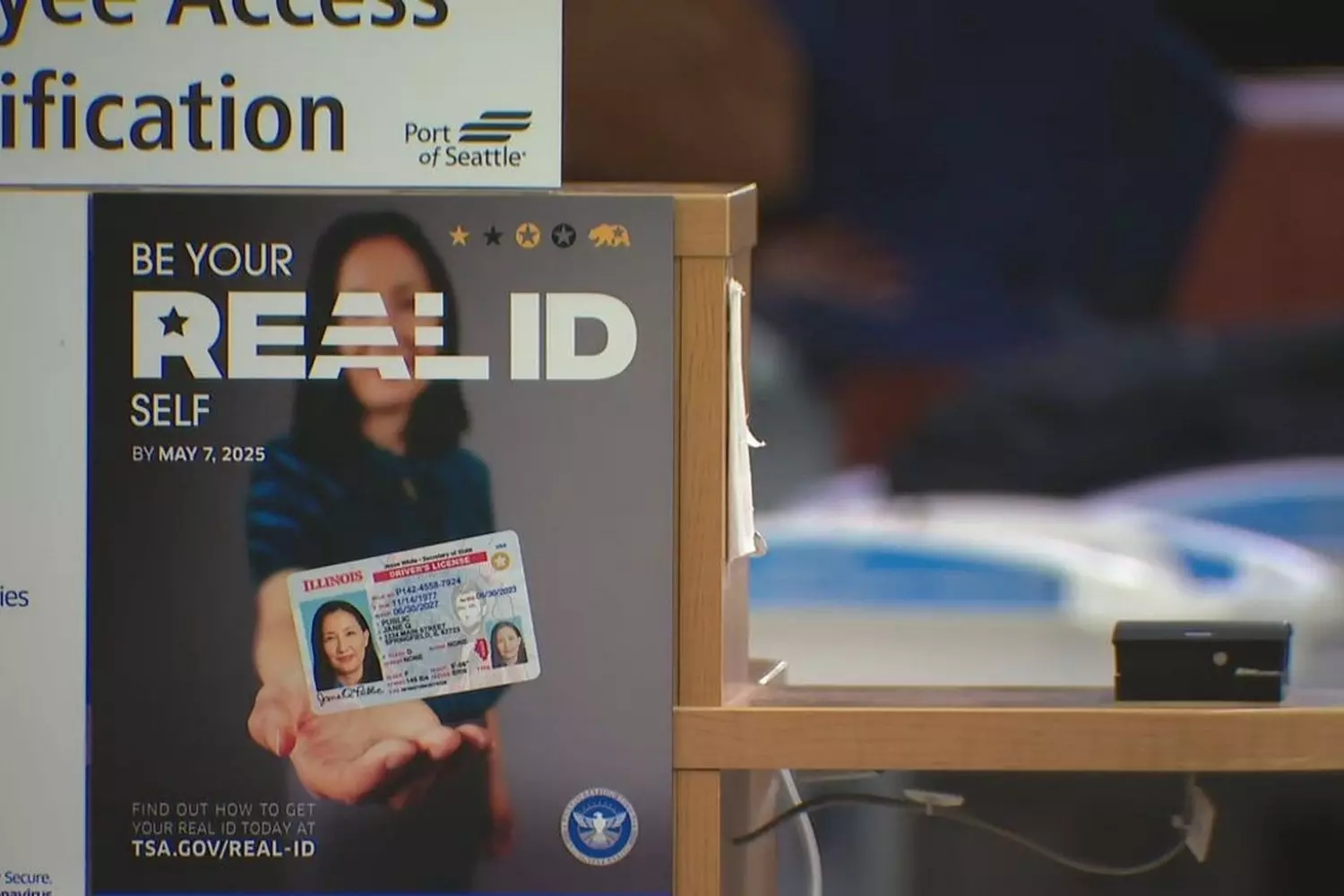
What Documents Are Required to Get a Driver’s License in the USA?
Getting a U.S. driver’s license doesn’t start with the exam — it starts with gathering your documents. If you show up at the DMV unprepared, you could waste time (and money) — they simply won’t accept you. Below is a detailed, practical guide on exactly what to bring, which documents are acceptable as proof, and how to prepare so your visit goes smoothly.
- 01. The main idea in two words
The DMV requires you to prove three things: who you are (identity), where you live (residency), and your legal status in the U.S. (legal presence). They usually also ask for your SSN or a document proving you don’t have one. Everything else is state-specific variations. - 02. Most commonly required (minimum)
- Passport with a valid visa or Green Card — the main document for proving identity and status.
- I-94 (entry record) — digital/paper record of your entry (can be printed from the CBP website).
- Social Security Number (SSN) — card or letter from the SSA with your number. If you don’t have an SSN, an official letter from the Social Security Administration confirming that you don’t have one or are ineligible is usually required.
- Two documents proving your residential address. Acceptable proofs (choose 2): utility bill (electricity, water, gas, internet) from the last 60–90 days; lease agreement signed by the owner; bank statement or credit card statement showing your address; official letters from school or employer (if they indicate your address); tax documents; or driver’s license from another state (in case of address change).
- Completed DMV application form — often available to download and fill out in advance from your state’s DMV website.
- Additional documents that may be required: driving course completion certificate (sometimes needed to expedite the exam or when exchanging a license); notarized translation of foreign driver’s license — may be needed for license exchange or experience verification; medical / eye test — required for some categories (especially CDL); for a regular license, vision is often tested directly at the DMV; birth certificate — if you don’t have a passport or in special cases; documents for name change (marriage certificate, court order) — if your name differs between documents; letter from employer or school confirmation — for special cases (e.g., temporary students).
- 03. For students and temporary visa holders
If you are on an F-1 (student) or J-1 (exchange) visa, additionally bring:
- I-20 (for F-1) or DS-2019 (for J-1) signed by the DSO/RO;
- Status confirmation — sometimes DMV requests these along with your passport and I-94.
- 04. If you already have a foreign license
Bring the original national license and a notarized translation if your state requires it. Some states allow license exchange without an exam — check in advance which countries are on the reciprocity list. - 05. Originals, copies, and translations — the rules of the game
- Always bring original documents — the DMV almost always requires seeing originals.
- Make one or two copies in advance — this helps avoid delays.
- If documents are in another language — prepare a certified translation. Some states require an officially certified translation; others accept a notarized copy.
- 06. For minors (under 18)
- Parental consent (parental consent) is required — sometimes in the form of a signed statement in front of a notary.
- School documents (school ID, transcripts) may be required — check your state’s rules.
- 07. Special cases: CDL and REAL ID
- CDL (Commercial Driver’s License): in addition to standard documents, a DOT medical certificate (DOT physical) and additional tests are required.
- REAL ID: if you want your license to meet the REAL ID standard (required for domestic flights and access to federal buildings), the DMV will ask for a stricter set of documents: proof of citizenship/status, SSN, two proofs of address, etc.
Common reasons for denial and how to avoid them
- Incomplete documents
Solution: use a checklist and check your state DMV website 24 hours before your visit. - Passport with expired visa
Solution: verify the validity of your passport and visa. - Documents in a foreign language without translation
Solution: prepare a certified translation in advance. - Poor-quality photos/copies
Solution: make clear copies and bring a spare set.
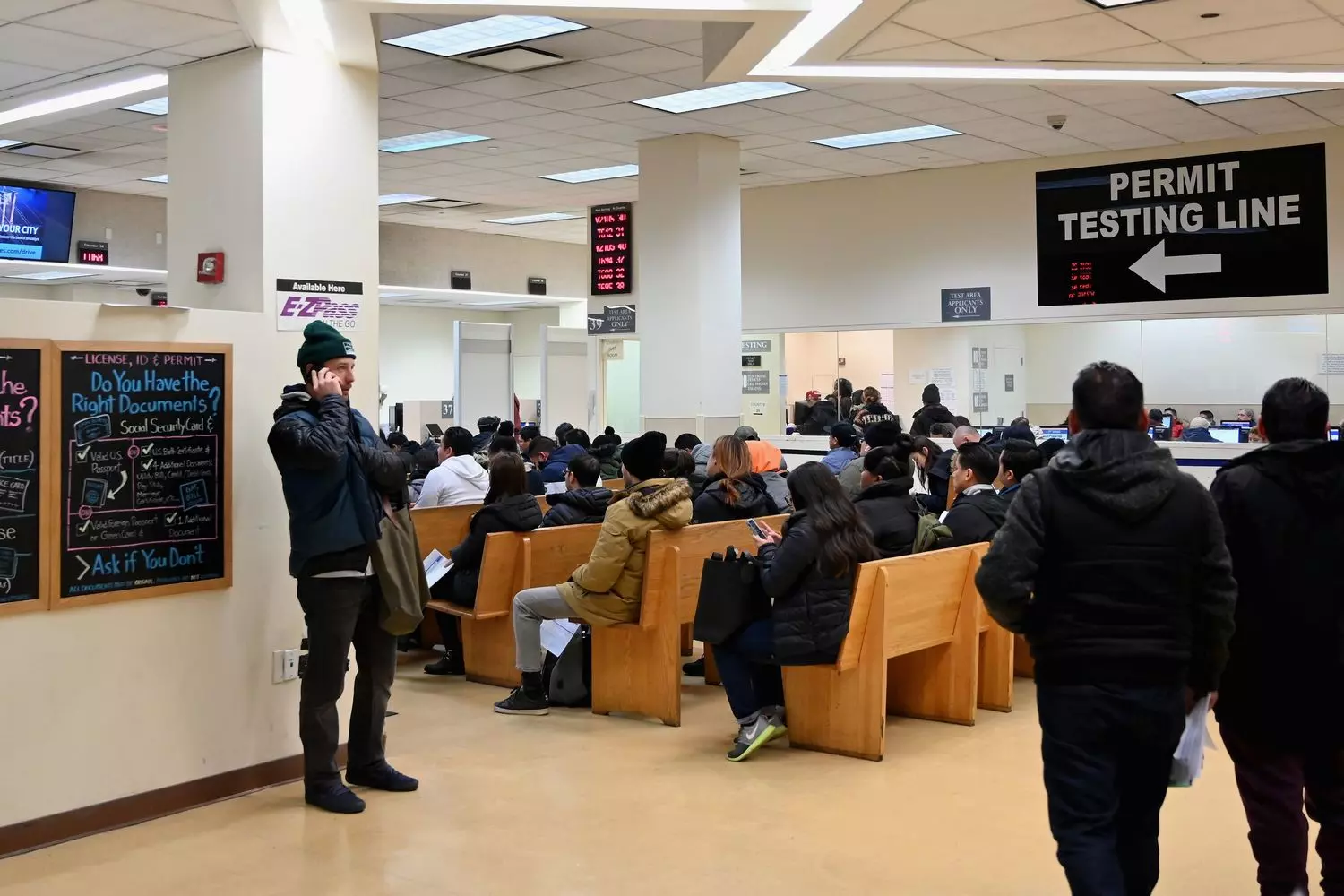
Theoretical Driving Test in the USA: How to Prepare and Pass on Your First Try
Before feeling the freedom of driving in the U.S., every future driver faces the first important hurdle — the theoretical exam. This is not just a formality: the test checks your knowledge of traffic rules, your ability to navigate the road, and your understanding of basic safe driving principles. Let’s go through it step by step.
- 01. What the theoretical exam is
The Knowledge Test is a written or electronic exam that evaluates your knowledge of traffic rules, signs, and basic road safety.
It is a mandatory step for obtaining a Learner’s Permit — a temporary permit to drive under the supervision of a licensed driver. Key points:
- You can take the test at a DMV office or, in some states, online (via the official portal).
- The number of questions depends on the state: usually between 25 and 50.
- Allowed mistakes: typically 4–6 incorrect answers (exact numbers vary by state).
- 02. Topics covered
The test covers three main areas:
- Traffic rules
Speed limits on different types of roads, right-of-way at intersections, passing, lane changes, school bus zones, procedures in case of accidents or unexpected situations. - Road signs and markings
Warning, regulatory, and informational signs, colors and shapes — it’s important to memorize them because every sign in the U.S. carries specific meaning. Lane markings, crosswalks, and bike lanes are also tested. - Safe driving
Following distance and speed depending on conditions, driving in bad weather, night driving, seat belt and child seat usage, alcohol and drug rules, accident prevention, and stress management while driving.
- 03. How to prepare
- Driver’s Manual — the official DMV handbook for your state
Available for free on the DMV website, it contains all rules, signs, and instructions that will appear on the test. - Mobile apps and online practice tests
Many apps simulate the actual exam, allowing repeated practice to improve speed and accuracy. Excellent for people with limited time. - Test in your native language
Some state DMVs offer exams in Russian, Spanish, and other languages. This helps beginners understand the rules and reduces errors due to language.
Tip: even if the test is available in Russian, try to learn the English terms for road signs — you’ll encounter them in real driving situations.
- 04. What a Learner’s Permit is
After passing the theoretical exam, you receive a Learner’s Permit — a temporary permit to drive. Key points:
- Allows driving under the supervision of a licensed adult (usually over 21 years old).
- Restrictions may apply during the Permit period: no night driving, limited number of passengers, mandatory seat belt use.
- Validity varies from 6 months to 1 year depending on the state.
The Learner’s Permit is an important step as it allows you to gain experience safely before taking the practical driving test.
- 05. Helpful tips for passing successfully
- Take several practice tests online
This helps you get used to the question format. - Read the Driver’s Manual carefully
Pay special attention to sections on road signs and right-of-way at intersections. - Create mini-charts or flashcards
With key signs and speed limits. - Don’t try to memorize everything
Focus on common situations and rules you will actually encounter on the road. - Rest before the exam
Fatigue reduces focus and can lead to simple mistakes.
The theoretical exam is the first step toward freedom on American roads. It tests not only your knowledge of the rules but also your ability to think like a driver, assess situations, and act safely. With proper preparation and understanding of the test structure, your chances of passing on the first try are very high.
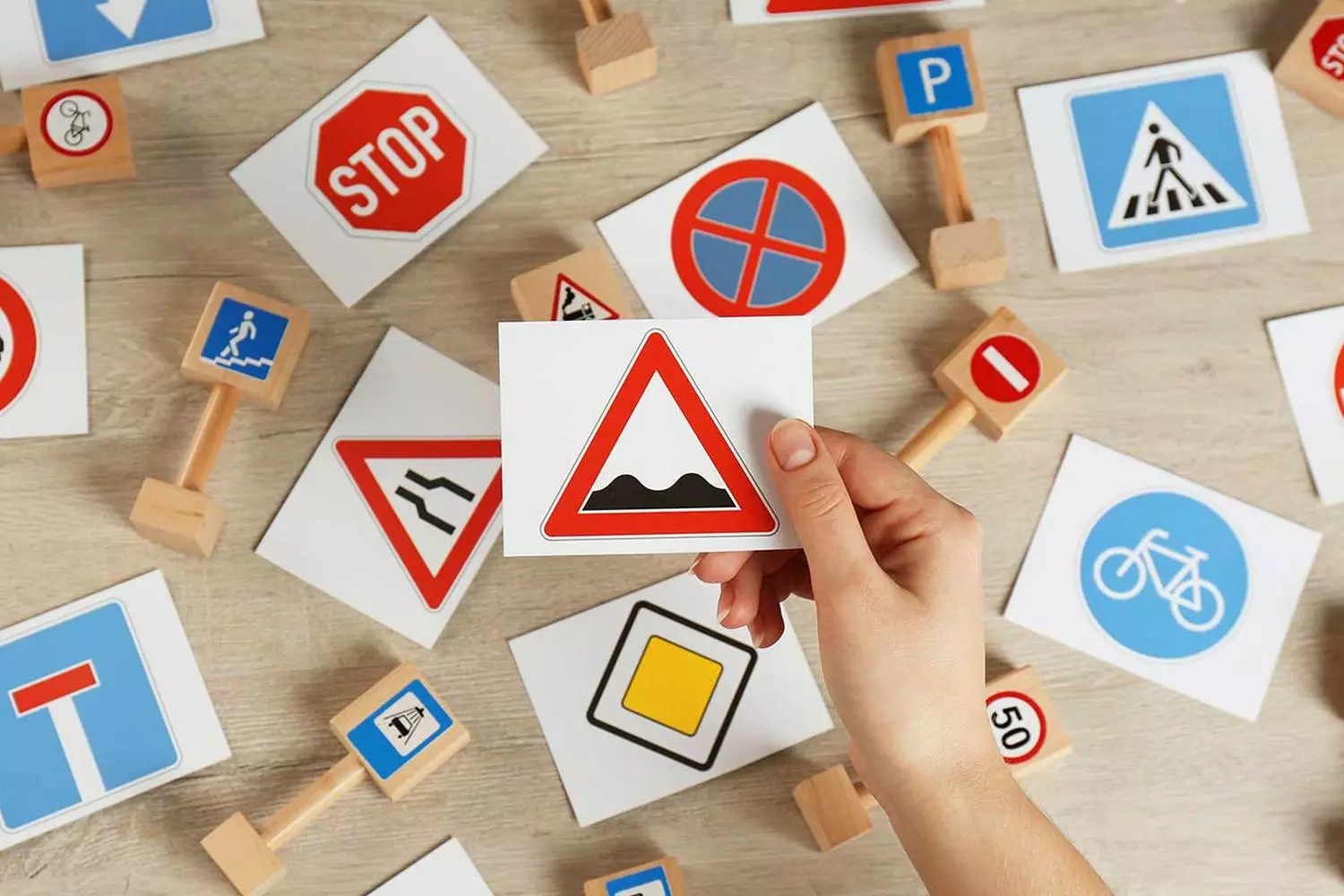
Practical Driving Test in the USA: How to Confidently Get Behind the Wheel and Pass on Your First Try
After successfully passing the theoretical exam and obtaining a Learner’s Permit, the most exciting stage begins — the practical driving test. This is the moment when you demonstrate to the examiner that you not only know the rules but can also drive safely in real-world conditions. Let’s go through how to prepare, what is assessed, and how to pass the test confidently.
- 01. How to schedule the practical exam
Before sitting behind the wheel with an examiner, you need to complete several steps:
- Gather your documents
Learner’s Permit, passport/ID, proof of insurance and vehicle registration, and any additional documents required by your state. - Complete sufficient driving practice
Typically 20–40 hours under the supervision of a licensed adult. It is important to gain experience in various conditions: daytime/nighttime, city/highway, rain or sunshine. Many DMVs provide detailed instructions on which maneuvers to practice beforehand. - Prepare your vehicle
All lights, brake lights, and turn signals must be fully functional. The car must have valid insurance and registration at the time of the exam. Some DMVs check the vehicle’s condition before the test begins.
- 02. What the examiner evaluates
The practical test assesses your ability to drive safely under real conditions while following traffic laws. Key elements of the exam include:
- Parking
Parallel parking or backing into a space. Accuracy, speed, and spatial awareness are evaluated. - Turns and lane changes
Turning at intersections, making U-turns, and changing lanes. The examiner checks your use of signals, mirrors, and compliance with rules during maneuvers. - Speed compliance
Driving at a safe speed in the city and on highways, adhering to signs and road markings. - Stopping at stop lines
Full stop at red lights and stop lines, judging safe distances, and starting correctly after a stop. - Behavior at intersections
Right-of-way rules, monitoring pedestrians, cyclists, and other vehicles, anticipating situations, and responding appropriately to potential hazards.
- 03. Practical tips for passing the exam
- Choose morning hours
Roads are less busy, fewer distractions and stressful situations. - Drive at a controlled pace
Maintain safe speed and distance, check mirrors and blind spots. - Practice key maneuvers in advance
Parallel parking, backing into a garage, stopping at stop lines. Practice under the supervision of an experienced driver who can provide feedback. - Familiarize yourself with the DMV route
Many states publish sample routes. Walk through the route beforehand using your Learner’s Permit (with an instructor). - Stay calm
The exam is not a race. Mistakes happen; the key is to respond safely. Take deep breaths and focus on safe driving.
Interesting fact: In some states, parking is strictly evaluated: parallel parking with an error of more than 30 cm is considered a failure, and in cities with narrow streets, this maneuver often becomes the most stressful. That’s why practice in real conditions is extremely important.
The practical exam is your first step toward independent driving. The key elements are confidence, adherence to rules, and safe vehicle handling skills.
Once you’ve gathered your documents, practiced, and chosen a calm time — you’re ready to take the test on the first try and gain the key to true freedom on American roads.
Remember: the examiner evaluates not perfect driving, but your ability to safely operate a vehicle in any situation.
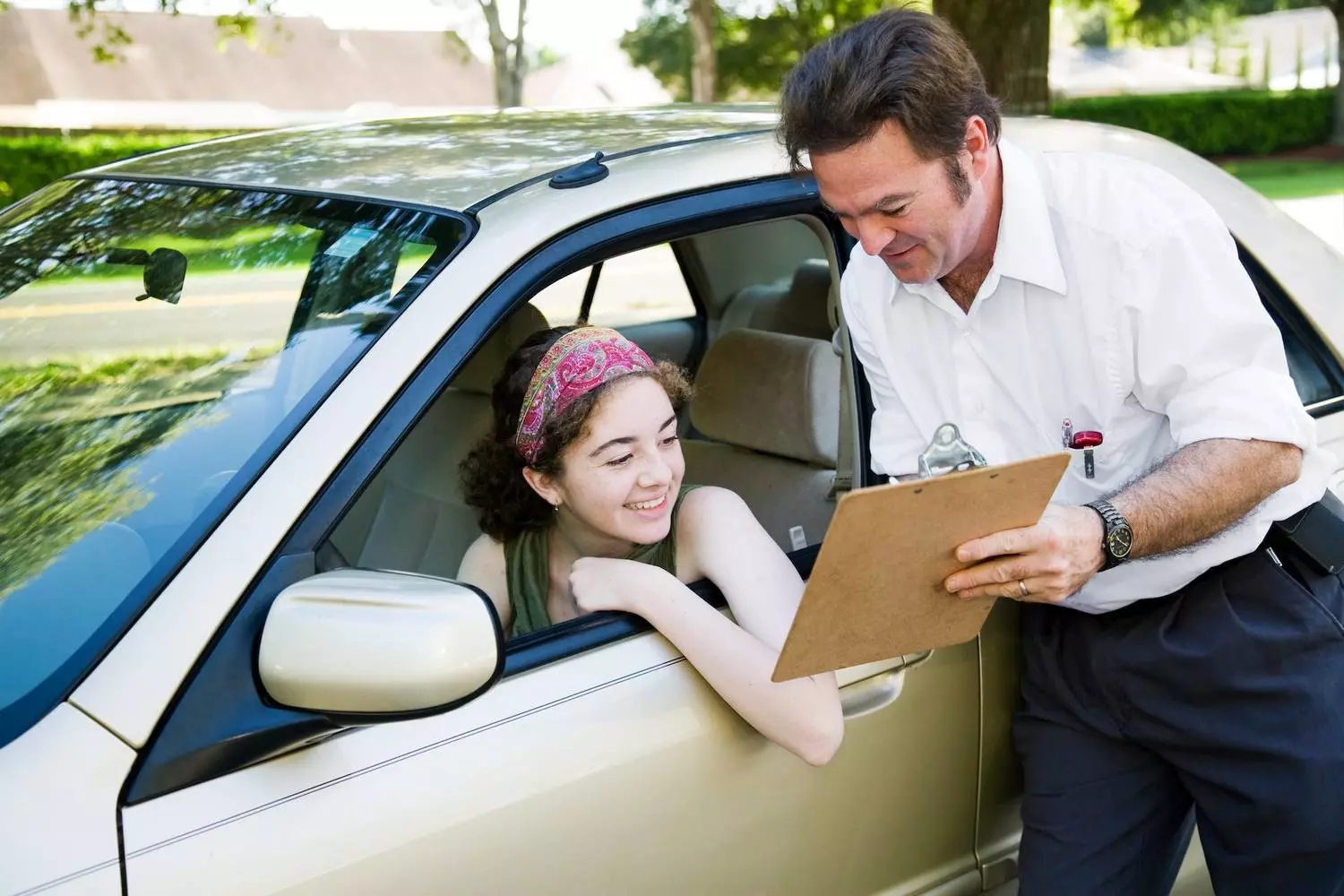
How Foreigners Can Get or Exchange a Driver’s License in the USA: A Complete Guide
For many immigrants and tourists, the question “How to get an American driver’s license?” becomes one of the first and most important. In the U.S., it is not just a formality — a driver’s license opens access to renting housing, banking services, and, of course, the freedom to move around. If you already have a driver’s license from your home country, there are several options: use an international driving permit, exchange it, or go through the full licensing process from scratch. Let’s break down each option in detail.
- 01. International Driving Permit (IDP) — a temporary option
International Driving Permit (IDP) is a document that translates your national driver’s license into several languages, including English. It allows you to:
- Drive in the U.S. without obtaining a local license;
- Participate in traffic while on a tourist visa.
Key points: - Validity: usually 6–12 months, depending on the state;
- Requirement: you must have a valid national license;
- IDP does not replace an American license but temporarily verifies your driving experience;
- For long-term stays (work, study, immigration), it is recommended to obtain a license from your state of residence.
Tip: check your state’s DMV rules before traveling — some rental companies require an IDP even if you have a national license.
- 02. Exchanging a foreign driver’s license
Some U.S. states have reciprocity agreements with other countries. This means citizens of those countries can exchange their license for an American one without taking the full exam. Examples:
- Florida and New York — support license exchange for tourists and new residents from countries such as Canada, Germany, South Korea, France, Japan, and others.
- The process usually includes: verification of the national license, translation and notarization (if not in English), payment of fees, and visiting the DMV. Sometimes a short written or vision test is required, but the practical driving test is often waived.
Important: the list of countries and conditions depends on the state. Even with an agreement, the DMV may request additional documents.
- 03. Obtaining a license from scratch
If an exchange is not possible, a foreigner must go through the standard procedure, just like a new driver in the U.S. Steps:
- Theoretical exam
Study the state Driver’s Manual, take the test at the DMV (or online if the state allows), and obtain a Learner’s Permit. - Practical training
At least 20–40 hours of supervised driving. Practice parking, lane changes, turns, stops, and safe driving rules. - Practical exam
The examiner evaluates your ability to drive safely under real conditions. Upon successful completion, you receive a full state driver’s license.
Tip: even if you have driving experience abroad, the DMV requires skill verification through the standard process to ensure you are familiar with U.S. traffic rules and signs.
- 04. Translation and notarization of national licenses
To use your foreign license at the DMV as proof of experience, it is important to:
- Have a notarized translation into English;
- Check the requirements of your state — sometimes an official translation is enough, sometimes notarization is required;
- Bring both the original and a copy to the exam or exchange.
Lifehack: prepare the translation and copies in advance — this speeds up the process and reduces the risk of refusal.
- 05. Special considerations for students and temporary visas
- Temporary visas (F-1, J-1) often allow driving with an IDP or exchanging a license if the state permits;
- In some cases, the DMV requires additional documents — I-20, DS-2019 and proof of residence;
- Even with prior experience, it is best to check the requirements for foreign applicants in your state.
- 06. Summary and recommendations
- IDP — ideal for tourists and short-term visits;
- License exchange — a fast option for citizens of countries with agreements;
- Full process — a universal path for everyone else, and for those planning to live in the U.S. long-term.
Main rule for foreigners: make sure your national license is translated and notarized, check your state’s specific rules, and choose the option that best fits your situation.
![US Driver's License: What the Official Document Looks Like Close-up of a United States driver's license from the state of [State Name] on a white background](https://americanbutler.ru/storage/app/media/useful/lifehacks/driver-license/driver-license-07.webp)
How Much Does It Cost to Get a Driver’s License in the USA?
Obtaining a driver’s license in the U.S. is not only a bureaucratic procedure but also a matter of financial planning. Unlike many countries, the cost depends on the state, age, type of license, and the chosen method of learning. Below is a detailed breakdown of all possible expenses so you know exactly how much to budget.
- 01. Basic costs for a driver’s license
The cost of obtaining a standard driver’s license (Class D) includes several items:
- DMV application fee — $30–50;
- Theoretical exam — $10–20;
- Practical driving exam — $20–40;
- Photo and issuance of the license — $10–15.
Total: on average $30–100, depending on the state and exact fees. For example, in California it costs around $35–40, while in Florida — $48–60.
- 02. Additional costs for training
If you have no driving experience, you will need practical training. There are two options:
- Individual lessons with an instructor
Cost per hour: $30–70. To confidently pass the exam, usually 20–40 hours of driving are needed, which amounts to $600–2800 if taking only individual lessons. - Full course at a driving school
Usually includes 10–15 lessons, sometimes with theoretical preparation. Cost: $400–700. Some schools offer combo packages that include lessons in their car, assistance with DMV registration, practice parking, and exam preparation. Such a package is often more cost-effective than arranging all steps on your own.
Tip: if you live in a large city with heavy traffic, learning with an instructor is especially useful — it reduces the risk of failing the practical exam.
- 03. Additional expenses
- Theoretical materials and apps
The Driver’s Manual is usually free online. Printed versions or apps with practice tests cost $10–20. - Medical certificate (for CDL or sometimes REAL ID)
$20–100 depending on the clinic. - Translation and notarization of foreign licenses
$30–50 for a certified translation. May be required if you want to exchange your national license. - Car insurance for practice
If you use a car for lessons or the exam, make sure it is insured. Cost depends on the insurance company, age, and driving experience — from $50 for short-term daily coverage to several hundred dollars for a monthly policy.
Obtaining a driver’s license in the U.S. is an investment in mobility and independence. Even the minimal costs for application and exams are $30–100, but including training, car rental, and additional services, the budget can reach $400–700 and higher.

Buying a Car in the USA: A Complete Buyer’s Guide
Getting a Driver’s License in Florida: Key Features and Requirements
Florida is one of the most popular states for immigrants, tourists, and "snowbirds" who spend winters here. If you plan to live, work, or travel in Florida, knowing the local rules for obtaining a driver’s license can save you time and stress. Although the system is largely similar to the general U.S. process, there are a number of specific features to keep in mind.
- 01. DHSMV — the main authority
In Florida, the DMV is called the DHSMV (Department of Highway Safety and Motor Vehicles). Here:
- Driver’s licenses are issued and renewed;
- Theoretical and practical exams are conducted;
- Vehicles are registered and license plates issued;
- Traffic violations and point records are maintained.
Important: Each DHSMV office may have its own procedures and hours, so it’s best to plan your visit in advance via the official website.
- 02. Theoretical exam and language
- The exam can be taken in Russian, which is convenient for new residents from the CIS;
- Questions cover traffic rules, road signs, and safe driving;
- Florida DHSMV allows online testing, which saves time and reduces stress;
- After passing the theoretical test, you receive a Learner’s Permit — a temporary driving permit under the supervision of a licensed adult.
Tip: For those still learning English, taking the test in Russian significantly increases the chance of passing on the first try.
- 03. Practical exam
- After obtaining a Learner’s Permit, you need to gain driving experience and pass the practical exam;
- The exam includes parking, lane changes, turns, stopping at stop lines, and speed compliance;
- Practice can be done using a relative’s car or a driving school vehicle;
- After passing the test, you receive temporary licenses while the permanent cards are being printed.
- 04. International driving permits and foreign license exchange
Florida allows international driving permits (IDP) to be valid for up to 6 months from entry.
- Exchanging a foreign license without an exam is possible for citizens of agreement countries: Canada, France, South Korea, and others;
- The exchange requires original national licenses and a notarized translation;
- If you become a resident (Green Card or long-term visa), obtaining local licenses is mandatory to avoid fines.
Tip: Even if you have an IDP, it’s better to get local licenses immediately after obtaining residency — this saves money and stress.
- 05. Online services and conveniences
Florida DHSMV offers several useful options:
- Online appointment booking — convenient, especially in large cities;
- Queue checking — helps choose the least busy office;
- Theoretical test online — can be completed from home before visiting DHSMV;
- Temporary licenses immediately after passing the test — no need to wait for the card to be produced.
Lifehack: If you live in Miami, it’s better to book exams at offices in nearby cities, such as Hollywood or Hialeah Gardens — queues and stress are lower.
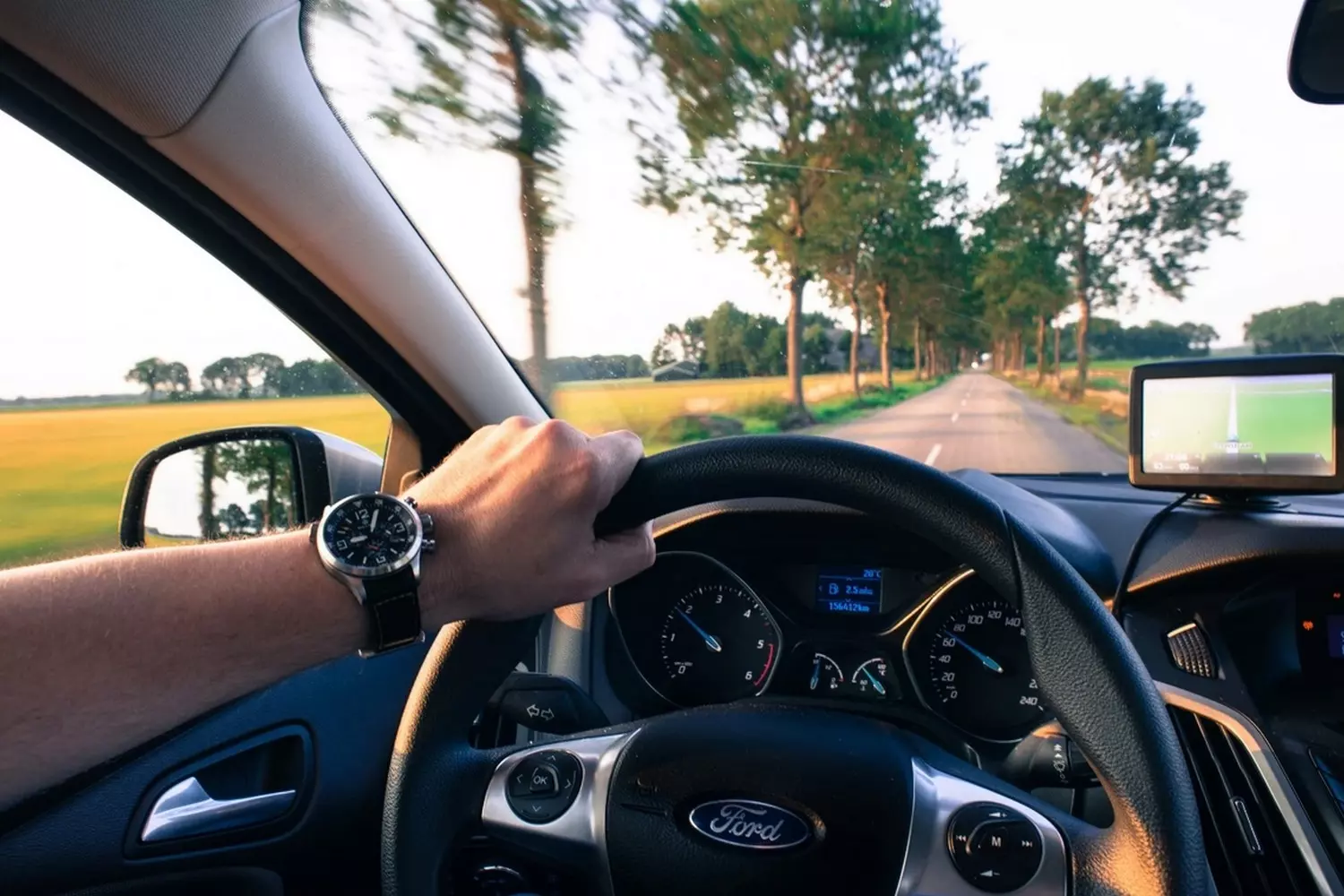
Driver’s License in the USA: Your Ticket to True Freedom
In the U.S., a car is not just a means of transportation. It’s a symbol of independence, mobility, and the ability to explore the country on your own terms. By obtaining a driver’s license, you open the door to real American life, where distances don’t limit your plans, and roads lead to amazing places and adventures.
- 01. Travel along coasts and major cities
With a license, you can get behind the wheel and embark on epic trips dreamed of by tourists and locals alike:
- Florida
From Miami to Key West along the famous Overseas Highway, crossing bridges over the Atlantic Ocean and scenic islands. - California
Along the Pacific Coast Highway from Los Angeles to San Francisco — ocean on the right, cliffs on the left, endless beaches, and famous winding roads. - Southwest
Travel through Arizona and Utah to the Grand Canyon and national parks with red rocks, as if straight out of a movie.
- 02. National parks and natural wonders
With an American license, it’s easy to explore unique natural attractions:
- Yellowstone — hot geysers, bears, and bison;
- Yosemite — waterfalls, cliffs, and incredible valley views;
- Sequoia and Redwood — giant trees over a thousand years old;
- Florida’s national parks — Everglades with swamps and alligators;
- Pueblo and Kansas — endless prairies and the legendary Route 66.
You can create your own route, change it spontaneously, stop for a picnic by a lake, or take sunset photos — the possibilities are almost endless.
- 03. Freedom from schedules and restrictions
Unlike public transport, a car allows you to:
- Hit the road at any time;
- Choose your own pace and route;
- Stop at interesting places, cafes, beaches, or small towns;
- Travel with friends or family without being tied to someone else’s schedule.
Example: You can leave Los Angeles in the morning, be at Santa Barbara beach by noon, and stay overnight in the Napa wine region in the evening — all without restrictions.
- 04. Confidence in any situation
A driver’s license provides not only access to cars but also confidence and peace of mind in any situation:
- Renting a car in another state or abroad becomes possible;
- Easily reach work, university, shops, and events;
- Emergency situations, such as a sudden trip to the hospital or to friends, are no longer stressful.
- 05. Cultural value
In the U.S., the road is part of the culture. A road trip is a way to:
- Meet locals and learn their traditions;
- Discover lesser-known corners of the country;
- Experience the atmosphere of each state through small towns, cafes, museums, and national parks;
- Become part of American history — Route 66, California’s legendary highways, Florida’s coastal routes.
Getting a driver’s license in the U.S. is not just about a document. It’s your ticket to freedom and adventure. With it, you can explore coasts, big cities, national parks, small towns, plan your routes as you like, and enjoy the road as part of life itself.
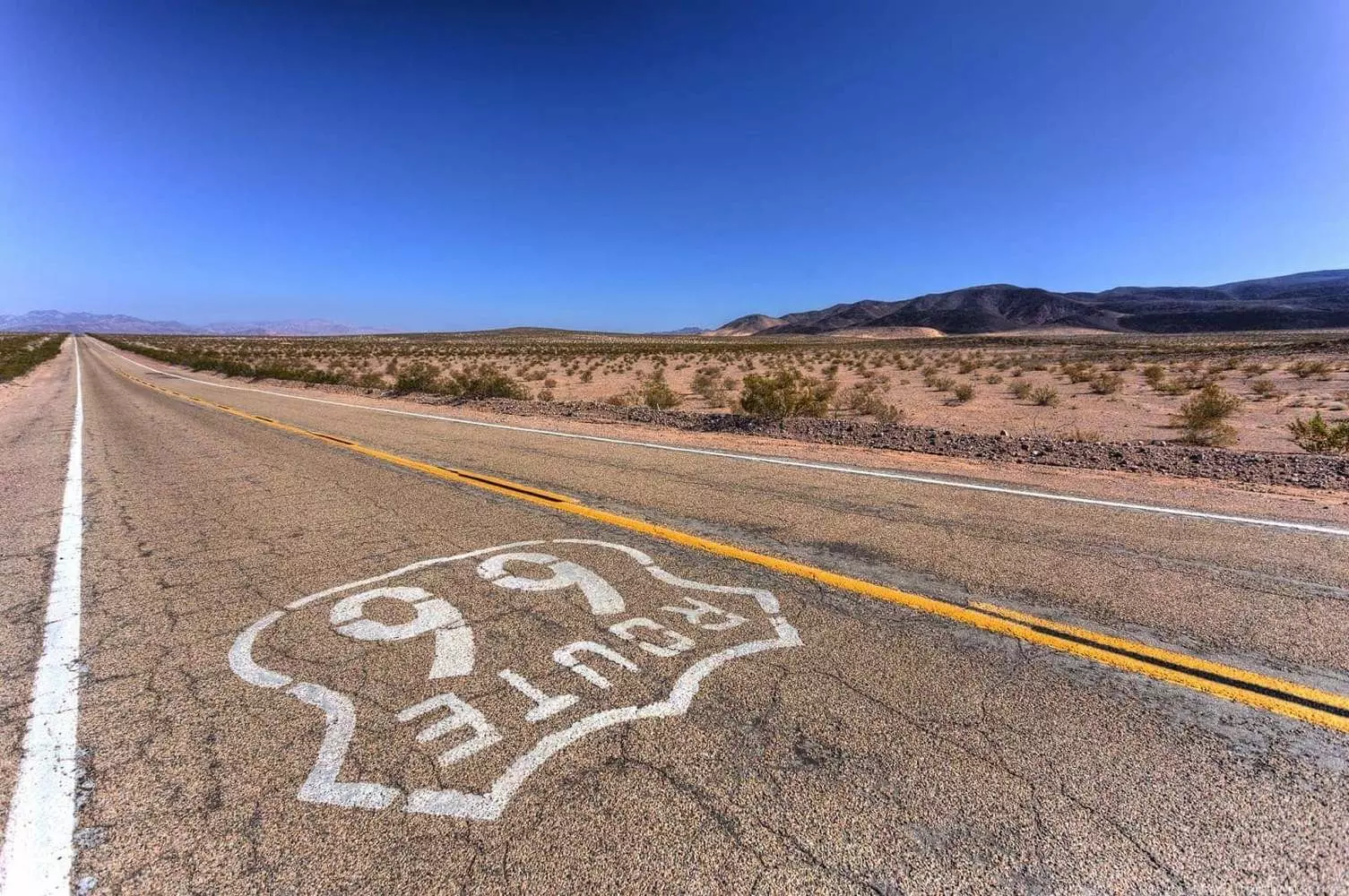
American Butler: Assistance with Documents and Tourism in the USA
Getting a driver’s license in the U.S. is not as difficult as it seems. The key is to prepare, gather your documents, practice a little, and not be afraid.
Every step is clear and logical, and the result is worth it: freedom of movement, confidence on the road, and a document that in America replaces half the bureaucracy. If you’ve just arrived in the U.S. and don’t want to spend weeks navigating DMV, translating documents, and preparing for exams, the American Butler team can help with everything. We assist not only with obtaining driver’s licenses, but also with:
- Adapting to life in the U.S.;
- Booking tours and trips;
- Organizing business or leisure travel;
- Consulting on visa and everyday matters.
America is a country where roads connect cities, people, and destinies. Having a driver’s license here means truly feeling free. American Butler knows how to make this journey easy, safe, and comfortable — whether it’s obtaining documents, traveling across states, or organizing your new life in the U.S.





























